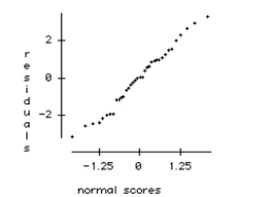Essay
For a class project, students tested four different brands of laundry detergent (1, 2, 3, 4) in
three different water temperatures (hot, warm, cold) to see whether their were any
differences in how well the detergents could clean clothes. The students took 36 identical
pieces of cloth and made them dirty by staining them with coffee, dirt, and grass. The 36
pieces were randomly assigned to the 12 combinations of detergent and temperature so
that each combination had 3 replicates. After washing, the students rated how clean the
clothes were from 0 (no change) to 20 (completely spotless). The two factor ANOVA table
is shown below along with an interaction plot and residual plots. 

a. Write the hypotheses tested by the Detergent F-ratio. Test the hypotheses and explain
your conclusion in the context of the problem.
b. Write the hypotheses tested by the Temp F-ratio. Test the hypotheses and explain your
conclusion in the context of the problem.
c. Check the conditions required for the ANOVA analysis.
Correct Answer:

Verified
Correct Answer:
Verified
Q2: Here are data about the average
Q3: Here are data about the average
Q4: When a sum of squares is divided
Q5: Here are data about the average
Q6: The regression below predicts the daily
Q7: In regression an observation has high leverage
Q8: In ANOVA, the Bonferroni method is used
Q9: The regression below predicts the daily
Q10: To discourage cheating, a professor makes
Q11: Homelessness is a problem in many